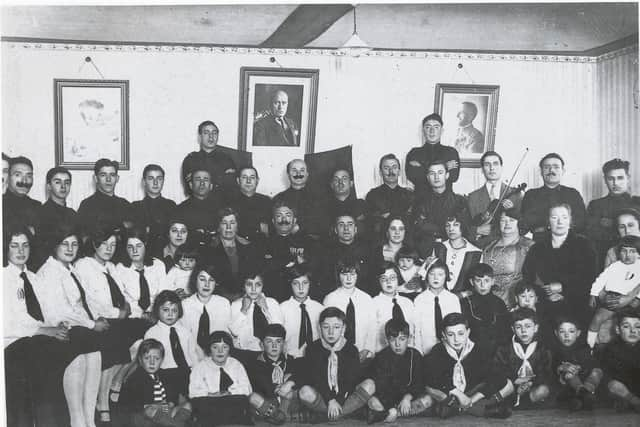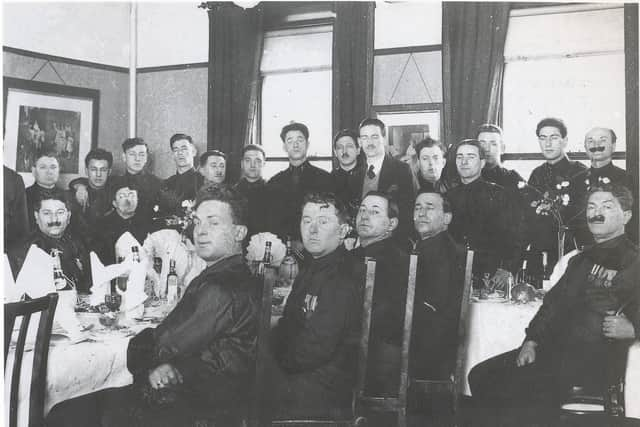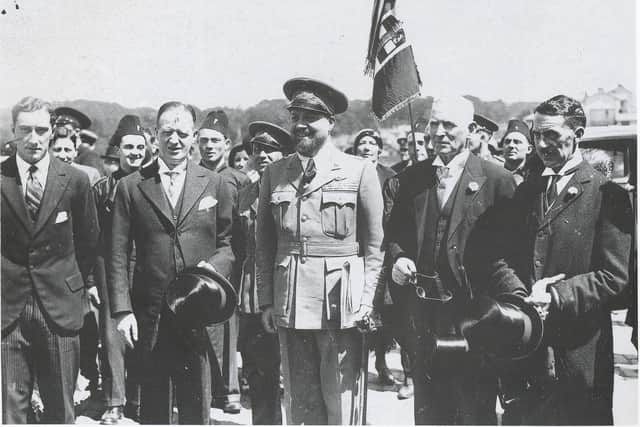Derry’s Italian connection: Ice cream, fish and chips, Black Shirts and terrazzo tiling
and live on Freeview channel 276
Derry’s links with Italy stretch back to the late nineteenth century.
It was in the 1890s that people from southern Italy, mainly from the Casalattico region, first arrived in Northern Ireland seeking a better life.
Advertisement
Hide AdAdvertisement
Hide AdWhile the majority of families settled in Belfast - so many, in fact, that one area of north Belfast became known as “Little Italy” - some of the families made their way as far as Derry.


First to arrive were the Macaris who settled in the city in 1897. Like many of the other Italians who travelled to Ireland, the Macaris were poor.
Head of the Macari family was Luigi who eked out a living by tramping the streets of Derry selling ice cream from a handcart. It wasn’t long, however, before he had saved up enough money to buy a shop in William Street.
Luigi eventually returned to Italy, leaving his two sons to take care of the shop.
Advertisement
Hide AdAdvertisement
Hide AdMuch of the information which forms the basis of this article was provided by Mrs. Libra Marchant, a


granddaughter of Luigi Macari; it was her father, ‘Jimmy’, as he was always known in Derry - despite
having been christened Archangelo - who ran the cafe at William Street.
In the early days, ice cream making was a laborious business with much of the mixing having to be done by hand.
Advertisement
Hide AdAdvertisement
Hide AdIn fact, to ensure there would be enough ice cream for the day ahead - particularly during the hot days of summer - work could begin as early as 5 a.m.


An key element of the ice cream making process was coating the mixing bowl with large pieces of rock salt - the only known way of preventing the ice cream from melting.
Indeed, Libra Marchant vividly recalls once putting the rock salt into the ice cream instead of into the bowl - in the process ruining an entire day’s supply!
There were also a number of other Italian families who settled in the city.
Advertisement
Hide AdAdvertisement
Hide AdMost of them, such as the Yanarellis, Battistis and Fiorentinis - who are still here today - were engaged in the business of selling ice cream.
Members of Derry’s Italian community met up on a regular basis to keep their Italian identity alive.
Meetings took place on Tuesday evenings in a hall off Bridge Street where the men could play snooker while the children were taught songs and recitations in the Italian
language.
This group continued to meet for a number of years but, as the younger people grew up speaking English as their main language, it was more and more difficult to keep the Italian element alive.
Advertisement
Hide AdAdvertisement
Hide AdA major event for the city’s Italian community occurred in 1933 when General Balbo, along with a fleet of twenty four seaplanes, arrived in Derry.
Balbo was then Mussolini’s Minister for Aviation and, later that year, was appointed Governor of Libya.
The planes were on their way from Rome to the United States to take part in the Chicago Centenary of Progress exhibition and made a pre-arranged stop at Culmore Point for refuelling.
Many members of the Italian community were presented to Balbo during his short stay in the city.
Advertisement
Hide AdAdvertisement
Hide AdDuring the Second World War, many of the American and British soldiers stationed in the city, especially those who were billeted at Watt’s Distillery on William Street, would have regularly visited Macari’s café.
In spite of this, however, Jimmy Macari, because he didn’t hold British citizenship, was classified as an alien during the war.
His daughter described how, one morning, the house was raided by the police and her father taken away without warning to the Isle of Man where he was interned for ten months before finally being sent home.
However, he was one of the lucky ones, as many of those detained along with him were put on a ship for deportation overseas. The vessel on which they were travelling was torpedoed and all aboard were lost.
Advertisement
Hide AdAdvertisement
Hide AdAs well as working in the fish and chip shop - a welcome addition to the the thriving ice cream business - Luigi “Leo” Macari, Mrs. Merchant’s brother, had another talent.
Like many other Italians, he was skilled at laying ornate terrazzo tiling and played a key role in laying the impressive tiled floor in Gortahork Church.
Examples of similar tiling from Belfast’s Italian community can be viewed in a variety of buildings such as Clonard Church, the City Hall and the famous Crown Bar.
While living in Derry, the city’s Italian families were still able to enjoy much of their native food.
Advertisement
Hide AdAdvertisement
Hide AdA London businessman visited Derry regularly to take orders for items such as salami and cheese, not readily available in the city at that time. The food parcels would then be sent on to the families.
Like many of the other Italian cafes, the demise of Macari’s café was brought about by the Troubles.
Bomb-plagued William Street in the late 1960s and early 1970s just wasn’t the place people wanted to stop off to spend their spare time.
Those of us who enjoy the Italian ice cream still produced in Fiorentini’s know the true loss of cafes such as Macari’s to our city.